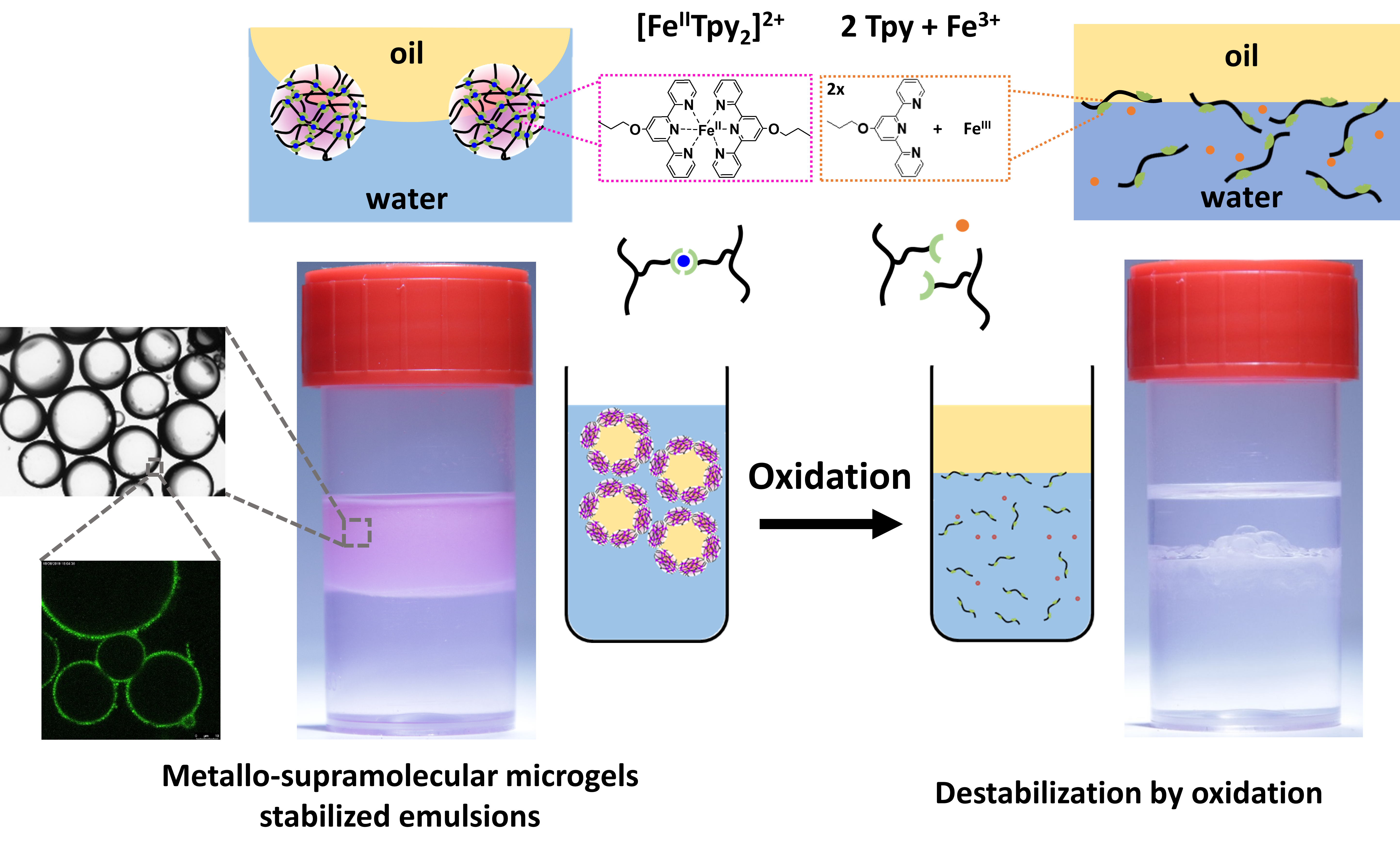A recent paper from the Colloids, Assemblies and Interfacial Dynamics team (CAID team) reports on an original route to destabilize emulsions by oxidation of metallo-supramolecular microgels used as emulsifier. Our study paves the road to the discovery of unusual microgel properties as our proof-of-concept can be extended to different supramolecular chemistry and architecture.
Our advanced class of microgels emulsifiers containing stimulable metallo-supramolecular instead of frozen covalent crosslinks was built from poly(N-isopropylmethacrylamide) (PNiPMAM) chains connected by iron(II)-bis(terpyridine) coordination supramolecular complexes that can be cleaved on demand leading to unique properties both at interfaces and in volume. The microgels synthesis is undemanding and the characterization of their supramolecular structure can be precisely achieved by standard methods. Singularly, interfaces of an oil-in-water emulsion stabilized by the supramolecular particles can be triggered at molecular scale by oxidation of Fe(II) to Fe(III), leading to emulsion breaking. In bulk, we show that a microgel dispersion can indeed be transformed into a polymer solution upon oxidation.

To get more details on the topic :
« Reversible Assembly of Microgels by Metallo-Supramolecular Chemistry »
Julien Es Sayed, Christophe Meyer, Nicolas Sanson* and Patrick Perrin*
ACS Macro Lett. 2020
https://pubs.acs.org/doi/10.1021/acsmacrolett.0c00389


